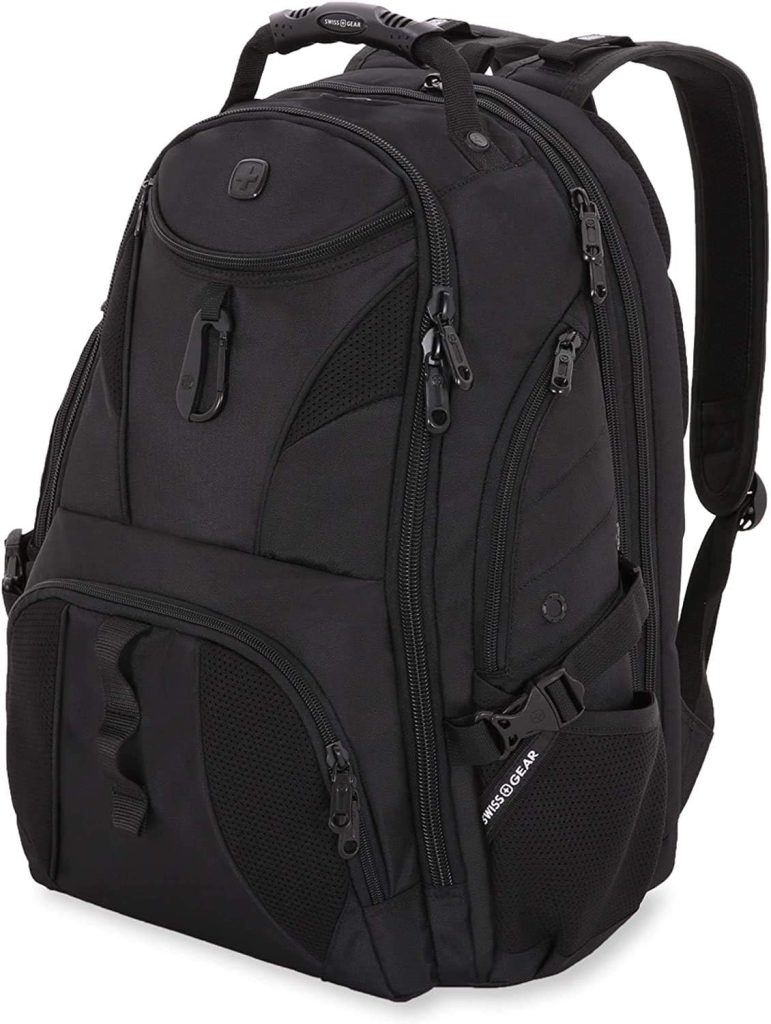Keeping your backpack clean is essential for maintaining its durability and stylish appearance, especially if you own a Swiss Gear backpack. Whether you’re a student, a professional, or an outdoor enthusiast, your bag is your reliable companion, carrying your essentials every day. However, constant use means it can accumulate dirt, stains, and odors over time. If you’re wondering how to wash a Swiss Gear backpack without damaging it, you’ve come to the right place. While tossing it into the washing machine may seem like an easy solution, doing so can harm the fabric, zippers, and padding. That’s why it’s crucial to know the correct method for cleaning your Swiss Gear backpack by hand.
This post will guide you through simple and effective steps to ensure your bag stays clean and fresh without compromising its quality. From removing stubborn stains to maintaining its sleek look, these tips will help you extend your backpack’s lifespan. So, whether you need to know the best supplies to use or how to tackle those tricky interior pockets, this article has you covered. Say goodbye to guesswork and learn the right way to care for your favorite bag. Read on to discover the ultimate guide on how to wash your Swiss Gear backpack and keep it looking as good as new.
Why You Shouldn’t Machine Wash a Swiss Gear Backpack
Swiss Gear, a renowned brand for its durable and functional backpacks, strongly advises against machine washing or dry cleaning their products. This recommendation stems from the potential damage that these cleaning methods can inflict on the backpack’s integrity.
The Detrimental Effects of Machine Washing:
- Weakening of Fabric: The vigorous agitation within a washing machine can put immense stress on the backpack’s fabric. This constant movement can cause the threads to loosen, leading to fraying, tearing, and ultimately weakening the overall structure of the bag.
- Zipper Damage: Zippers are crucial components of a backpack, allowing for smooth and easy access to its contents. The harsh tumbling action of a washing machine can cause the zipper teeth to become misaligned, jammed, or even broken. This can render the backpack difficult to use and potentially damage the contents within.
- Padding Deterioration: Many Swiss Gear backpacks incorporate padding for added comfort and protection. This padding, often made of foam or other delicate materials, can be easily compressed and deformed by the washing machine’s movement. This can result in flattened padding, loss of cushioning, and a decrease in the backpack’s overall comfort and support.
The Risks of Dry Cleaning:
- Chemical Damage: Dry cleaning involves the use of strong solvents that can have adverse effects on the backpack’s materials. These chemicals can discolor the fabric, weaken the stitching, and damage the water-resistant coatings that many Swiss Gear backpacks possess.
- Potential for Shrinking: Some backpack materials, such as nylon and polyester, may shrink when exposed to the high temperatures and chemicals used in the dry cleaning process. This shrinkage can alter the backpack’s shape and size, making it uncomfortable or even unusable.
Recommended Cleaning Method:
Swiss Gear recommends a much gentler approach to cleaning their backpacks. The best way to clean a Swiss Gear backpack is by hand with a damp cloth and a mild soap solution. This method allows for a more controlled cleaning process, minimizing the risk of damage to the backpack’s delicate components.
By following these guidelines, you can ensure that your Swiss Gear backpack remains in excellent condition for years to come, providing reliable service and accompanying you on countless adventures.

Supplies You’ll Need for Hand Cleaning
Before embarking on the task of cleaning your Swiss Gear backpack, it’s crucial to gather the necessary supplies. Having these items readily available will streamline the cleaning process and ensure that you can effectively remove dirt and grime without causing any damage to your backpack.
Mild Soap or Detergent:
- Importance of Mildness: Opt for a mild soap or detergent that is gentle on fabrics. Harsh chemicals found in some cleaning products can discolor the backpack material, weaken the stitching, or damage any water-resistant coatings.
- Suitable Options:
- Dish soap: Many dish soaps are formulated to be gentle on hands and effectively remove grease and grime.
- Laundry detergent: A small amount of mild laundry detergent can also be used for cleaning backpacks.
- Specialty fabric cleaners: Consider using a fabric cleaner specifically designed for outdoor gear, as these products are often gentle and effective on a variety of materials.
Soft-Bristle Brush or Sponge:
- Gentle Agitation: A soft-bristle brush or a non-abrasive sponge is ideal for gently scrubbing away dirt and grime from the backpack’s surface.
- Brush Options:
- Toothbrush: An old toothbrush can be particularly effective for cleaning intricate areas, such as zippers, buckles, and mesh pockets.
- Soft-bristled scrub brush: A small scrub brush with soft bristles can be used for larger areas of the backpack.
- Sponge Options:
- Melamine sponge: A melamine sponge, also known as a “magic eraser,” can gently remove stubborn stains without harsh scrubbing. However, use it with caution to avoid damaging the backpack’s fabric.
Damp Cloth:
- Rinsing and Drying: A clean, damp cloth is essential for rinsing away soap residue and wiping down the backpack after cleaning.
- Drying: A dry cloth can be used to absorb excess moisture and help speed up the drying process.
Cold Water:
- Temperature Considerations: Always use cold water for cleaning your backpack. Hot water can shrink or damage certain fabrics, such as nylon and polyester, which are commonly used in backpack construction.
- Rinsing: Cold water is also ideal for rinsing away soap residue, ensuring that no soap remains on the backpack to potentially irritate your skin or cause discoloration over time.
By gathering these simple supplies beforehand, you’ll be well-equipped to effectively clean your Swiss Gear backpack while minimizing the risk of damage and ensuring its longevity. Remember to always test any cleaning solution on an inconspicuous area of the backpack before applying it to the entire surface.
Step-by-Step Instructions: how to wash a swiss gear backpack
Swiss Gear backpacks are designed for durability and functionality, but like any gear, they require proper care to maintain their performance and longevity. While Swiss Gear advises against machine washing or dry cleaning, regular hand cleaning can keep your backpack looking and functioning its best. Here’s a step-by-step guide on how to hand wash your Swiss Gear backpack effectively:
1. Empty the Backpack Completely
The first and most crucial step in cleaning your Swiss Gear backpack is to empty it entirely. Remove all items, including pens, keys, snacks, and any other belongings. Don’t forget to check small pockets and hidden compartments. Shake the bag vigorously upside down to dislodge any loose debris, such as crumbs, dirt, or sand. This thorough emptying will ensure that no foreign objects interfere with the cleaning process and potentially damage the backpack’s fabric.
2. Dust Off the Exterior
Before applying any moisture, gently dust off the exterior of the backpack. Use a soft brush, such as a soft-bristled artist’s brush or an old toothbrush, to remove surface dirt, dust, and loose debris. A clean, dry cloth can also be used for this purpose. Pay close attention to areas with visible stains or heavy dirt accumulation, such as the bottom of the backpack, the shoulder straps, and any areas that come into frequent contact with the ground or other surfaces. This initial dusting will help to lift away loose particles and prepare the backpack for a more thorough cleaning.
3. Spot Clean Stains
For localized stains, spot cleaning is the preferred method. Create a gentle cleaning solution by mixing a small amount of mild soap with cold water. Dip a clean sponge or cloth into this solution and gently rub the stained area in a circular motion. Avoid soaking the fabric excessively, as this can cause water damage or distort the backpack’s shape. For stubborn stains, repeat the process with a fresh solution. Remember to test the cleaning solution on an inconspicuous area of the backpack first to ensure it doesn’t cause any discoloration or damage.
4. Clean the Zippers and Straps
Zippers and straps are particularly susceptible to dirt and grime. Use a damp cloth to wipe down the zippers, paying attention to the teeth and track. For stubborn dirt or grime on the zippers, use a soft-bristle brush to gently scrub away any residue. Clean the straps thoroughly, ensuring that all soap residue is removed to prevent stickiness. Sticky straps can be uncomfortable and make it difficult to adjust the backpack’s fit.
5. Wipe Down the Interior
If the inside of your Swiss Gear backpack needs cleaning, use a damp cloth with a touch of mild soap. Wipe gently and avoid excessive scrubbing, as this can damage the backpack’s lining. Ensure that all soap residue is removed from the interior. Allow the interior to air dry completely before refilling the backpack.
6. Air Dry Thoroughly
After cleaning, it’s crucial to allow your Swiss Gear backpack to air dry completely. Avoid placing it in direct sunlight, as this can cause the colors to fade and potentially damage the fabric. Hang the backpack by its straps in a well-ventilated area, such as a porch, balcony, or a laundry room. This will allow for maximum airflow and help to speed up the drying process. Once completely dry, your Swiss Gear backpack will be ready for your next adventure.
By following these simple steps, you can effectively clean your Swiss Gear backpack and maintain its excellent condition for years to come. Remember to always refer to the care instructions provided by Swiss Gear for specific cleaning recommendations for your particular backpack model.
By following these guidelines, you can ensure that your Swiss Gear backpack remains in excellent condition for years to come, providing reliable service and accompanying you on countless adventures.
Tips for Maintaining Your Swiss Gear Backpack
Proper maintenance is key to ensuring your Swiss Gear backpack stays functional and stylish for years. Here are some essential tips to help you care for your bag:
- Use a Rain Cover
Invest in a rain cover to shield your backpack from water, stains, and dirt during travel or bad weather. This simple step can prevent moisture damage and keep the fabric looking fresh. - Avoid Overloading
While Swiss Gear backpacks are built for durability, overloading them with excessive weight can strain the fabric, zippers, and seams. Pack only what you need to ensure your backpack lasts longer and remains comfortable to carry. - Store Properly
When not in use, store your backpack in a cool, dry place. Avoid leaving it in direct sunlight or damp areas, as this can weaken the fabric and cause mold or discoloration over time. A proper storage spot ensures your backpack stays in excellent condition.
conclusion: how to wash a swiss gear backpack
In conclusion, knowing how to wash a Swiss Gear backpack is essential for preserving its durability, functionality, and sleek appearance. While it may be tempting to take shortcuts like using a washing machine, following the proper hand-cleaning techniques ensures your backpack remains in top condition without the risk of damage. From spot cleaning stains with mild soap to thoroughly air-drying the bag, these steps are simple yet effective in maintaining the quality of your trusted travel or daily companion. Regular care not only extends the lifespan of your backpack but also keeps it looking fresh and ready for every adventure.
We hope this guide has provided you with valuable insights into cleaning and maintaining your Swiss Gear backpack. If you found this post helpful, please take a moment to like and share it with others who might benefit from these tips. Your support helps us create more helpful content like this! Also, we’d love to hear from you—do you have any special tricks for cleaning or maintaining your backpack? Share your thoughts, experiences, or questions in the comments below. Let’s keep the conversation going and ensure everyone enjoys the best care for their Swiss Gear backpacks!





